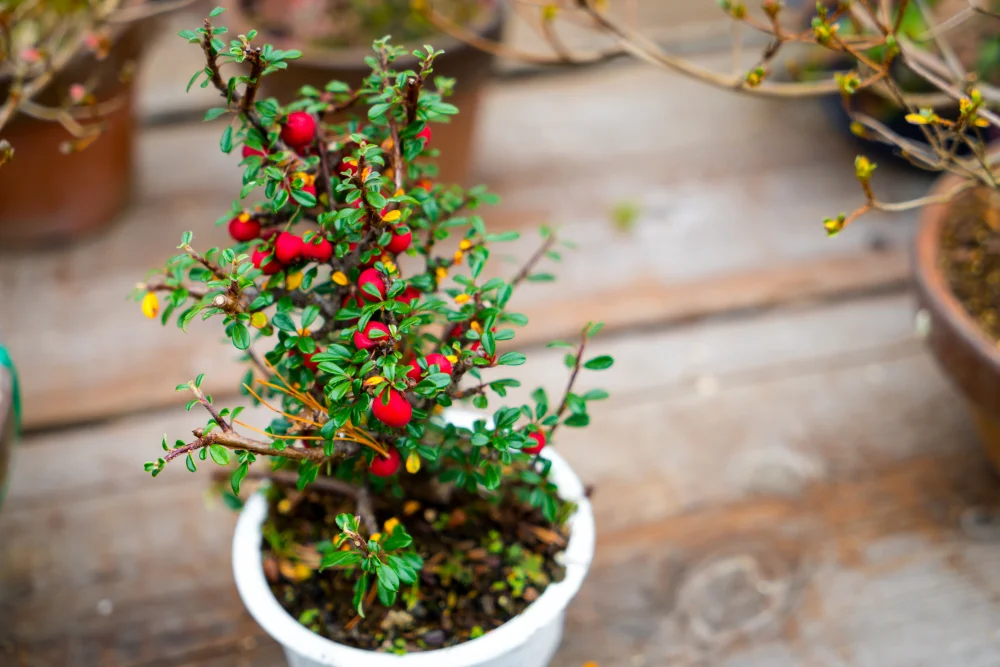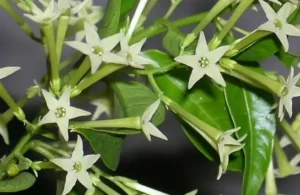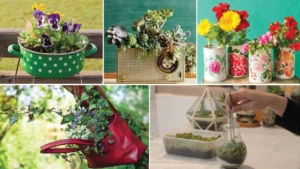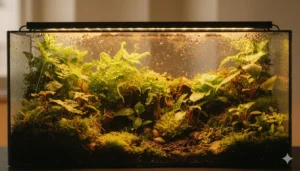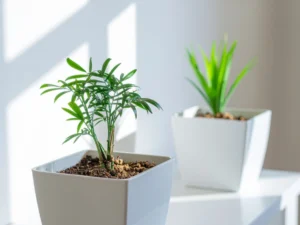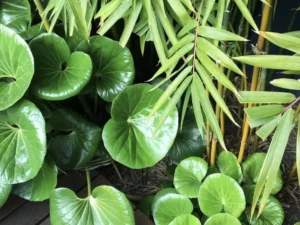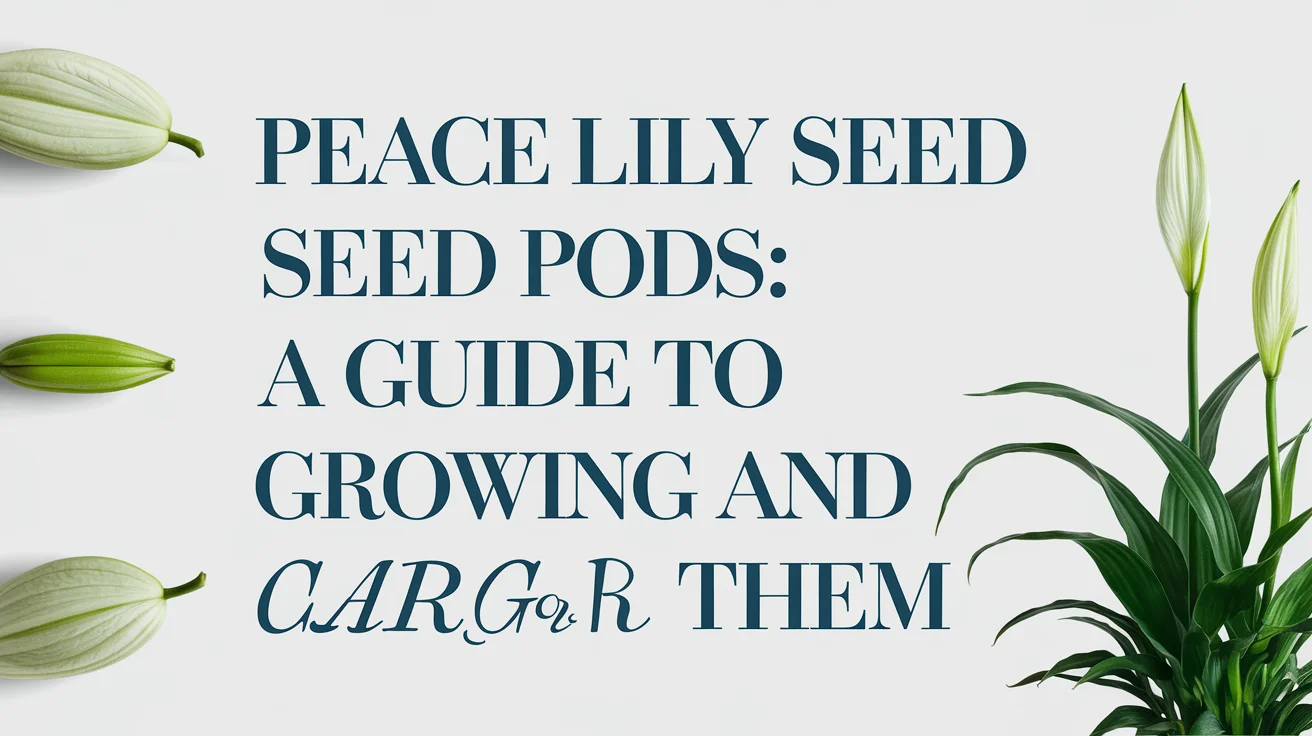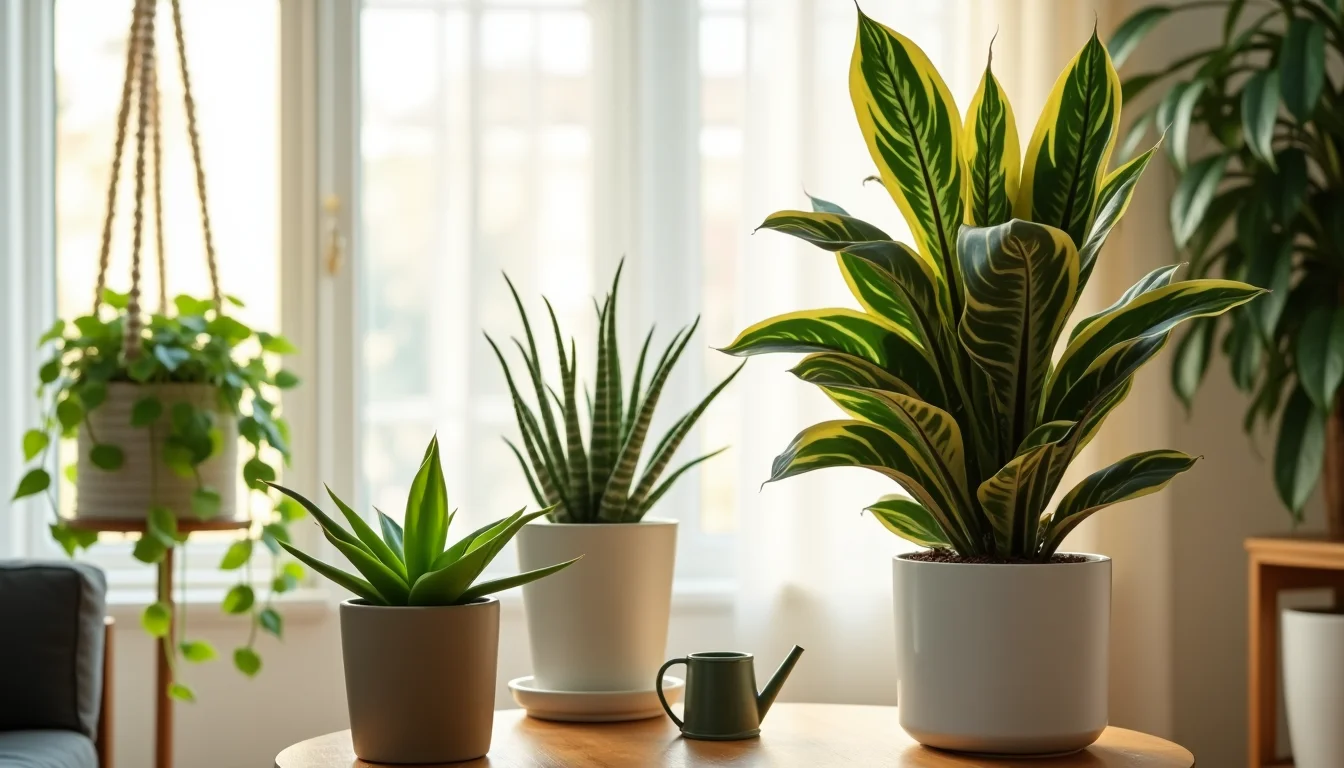The Rosary Vine, also known as Ceropegia woodii or the String of Hearts, is a mesmerizing trailing plant with heart-shaped leaves and thin, string-like vines. Loved for its unique appearance and easy growth habit, it’s perfect for hanging baskets or shelves. Rosary Vine Plant Care is simple, making it an ideal choice for both beginners and seasoned plant lovers.
Understanding the proper rosary vine plant care techniques will ensure your plant thrives indoors or out. In this guide, you’ll learn everything about lighting, watering, soil preferences, and propagation methods.
Understanding the Rosary Vine Natural Environment
The Rosary Vine originates from the warm and rocky regions of Southern Africa. It has adapted to store water in its thick, tuberous roots and succulent leaves, making it drought-tolerant and low-maintenance. By mimicking its natural conditions, you can grow a healthy and beautiful string of hearts at home.
This plant loves bright but filtered light, infrequent watering, and well-draining soil. Overwatering or lack of sun are common mistakes to avoid. Let’s dive deeper into each care aspect.
Light Requirements for Rosary Vine Plant Care
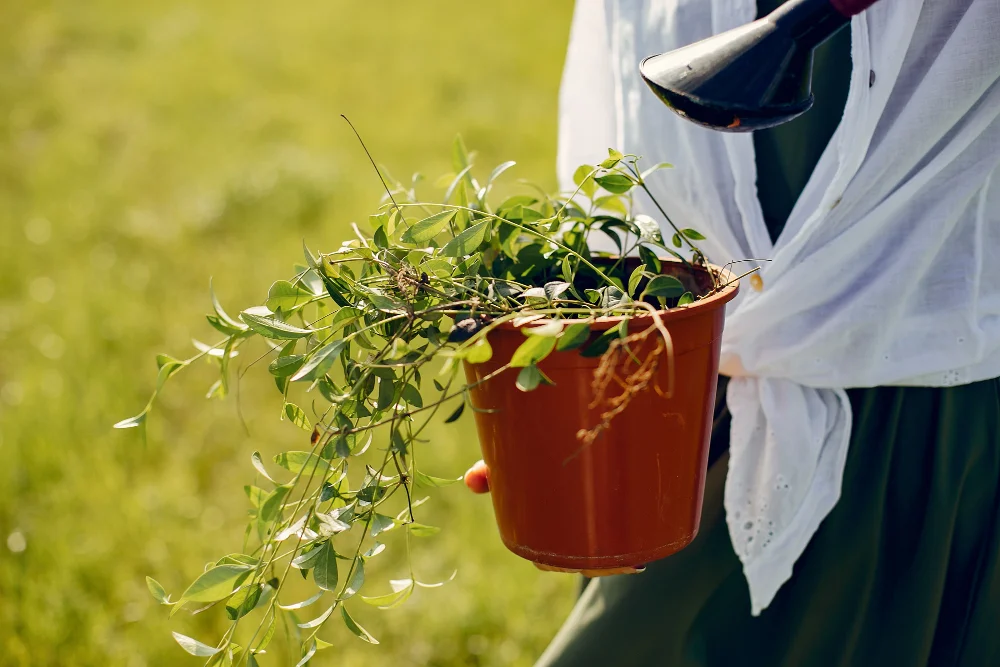
Rosary vine plant care starts with light. Light is crucial for this trailing beauty. The better the lighting, the more vibrant and fuller your vine will grow.
This plant thrives in bright, indirect sunlight. Morning sun is ideal, but harsh afternoon rays can scorch the leaves. If growing indoors, place it near an east or south-facing window with filtered light.
If light is too low, you’ll notice longer vines with fewer leaves. For compact growth and rich color, ensure it gets a minimum of 4–6 hours of indirect sun daily.
Watering Needs of the String of Hearts
Watering is another key part of rosary vine plant care. Unlike other houseplants, it prefers to dry out between waterings.
Let the top 2–3 inches of soil dry out completely before the next watering. It’s better to underwater than overwater. These vines are semi-succulents, storing moisture in their leaves and roots.
Signs of underwatering:
- Wrinkled or curled leaves
- Dry or crispy edges
- Slowed growth
Signs of overwatering:
- Yellowing leaves
- Mushy stems
- Root rot smells
Soil Mix and Repotting Tips
The soil you choose makes a big difference in rosary vine plant care success. This plant prefers well-draining, slightly sandy soil.
Use a cactus or succulent mix or create your own by combining:
- 2 parts potting soil
- 1 part perlite
- 1 part coarse sand
Repotting should only be done once the roots start to outgrow the container or when the soil loses its drainage ability. Every 2–3 years is ideal.
Temperature and Humidity Considerations
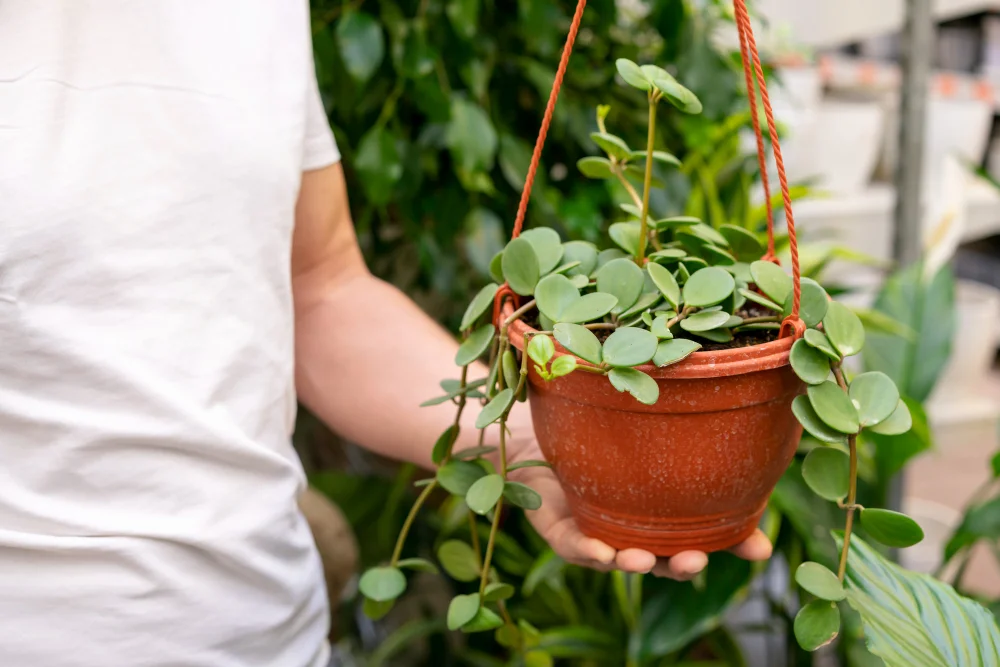
Rosary vines enjoy warm environments and adapt well to average room temperatures.
Keep temperatures between 60°F and 80°F (15°C–27°C). Protect the plant from frost and cold drafts. It can tolerate average indoor humidity, but slightly higher levels promote lush growth.
Avoid placing the plant near heating vents or air conditioners as they can dry out the foliage and soil faster.
Feeding and Fertilizing Your Rosary Vine
While not heavy feeders, rosary vines benefit from occasional feeding during the growing season.
Feed once a month during spring and summer using a balanced, water-soluble houseplant fertilizer at half strength.
Do not fertilize in fall or winter as the plant enters dormancy and needs rest. Over-fertilizing can burn the roots and stunt growth.
Pruning and Grooming Tips for Fuller Rosary Vine Plant Care
Pruning your Rosary Vine regularly helps maintain its shape and encourages fuller, bushier growth. By trimming long, leggy stems or removing yellowing leaves, the plant redirects energy to newer, healthier growth. This also prevents the plant from becoming too sparse or straggly, mainly when grown indoors.
Always use clean, sharp scissors or pruning shears to avoid damaging the plant. You can snip just above a leaf node to promote branching. The cuttings you remove can be placed in water or soil for easy propagation, allowing you to create new plants or fill in bare spots in the original pot.
Rosary Vine Plant Care: Propagation Made Easy
Propagation is one of the most rewarding parts of rosary vine plant care. You can multiply your plant easily by stem cuttings or tubers.
Here’s how to propagate:
- Choose a healthy vine with at least two nodes.
- Cut and place in water or directly into moist soil.
- Wait for roots to develop over 2–4 weeks.
- Transplant to a pot once roots are strong.
You can also place vines back into the mother pot to make it look fuller.
Propagation Made Easy
Propagation is one of the most rewarding parts of rosary vine plant care. You can multiply your plant easily by stem cuttings or tubers.
Here’s how to propagate:
- Choose a healthy vine with at least 2 nodes.
- Cut and place in water or directly into moist soil.
- Wait for roots to develop over 2–4 weeks.
- Transplant to a pot once roots are strong.
You can also place vines back into the mother pot to make it look fuller.
Rosary Vine Plant Care: Common Problems and Effective Solutions
Although Rosary Vines are generally low-maintenance, they can still run into problems if their basic needs aren’t met. Yellowing leaves often indicate overwatering or soil that doesn’t drain well. When water stays trapped in the pot, it can lead to root rot, which damages the plant from below.
Another common issue is leggy growth, where the plant becomes long and sparse due to insufficient light. This happens when it’s kept too far from a natural light source or in a dim room.
If leaves begin to fall off suddenly, it may be due to exposure to cold drafts or excessive watering during winter. Pest infestations, though rare, can also occur, especially in dry indoor environments. Mealybugs and aphids are the usual suspects. To treat them, gently wipe the leaves and vines with neem oil or a mild insecticidal soap. Early detection and consistent care are key to keeping your plant vibrant and healthy.
Seasonal Rosary Vine Plant Care Tips
Caring for your Rosary Vine throughout the year involves adjusting your routine to match the plant’s seasonal needs. During spring and summer, the plant enters its active growing phase and benefits from more frequent care. In contrast, fall and winter call for a slower approach as the plant becomes dormant.
Spring & Summer:
- Fertilize monthly
- Water when dry
- Propagate actively
Fall & Winter:
- Reduce watering
- Stop fertilizing
- Keep warm and dry
Final Thoughts on Rosary Vine Plant Care
Taking care of a rosary vine becomes enjoyable and straightforward once you’re familiar with its basic needs. This plant doesn’t demand much, just the right amount of light, occasional watering, and good airflow. Whether you’re new to plant care or have years of experience, the rosary vine adjusts well to different indoor environments and adds charm with minimal effort.
Its cascading vines, unique heart-shaped leaves, and soft patterns make it an eye-catching feature for shelves, hanging baskets, or windowsills. Plus, it’s easy to propagate, which means you can grow new plants from just a few cuttings. With the right balance of light, warmth, and pruning, the string of hearts stays lush and beautiful throughout the seasons.
Consistency, patience, and a little daily observation go a long way in successful rosary vine plant care. Follow these practical tips, and your plant will reward you with healthy, flowing vines that bring life and character to any space.

